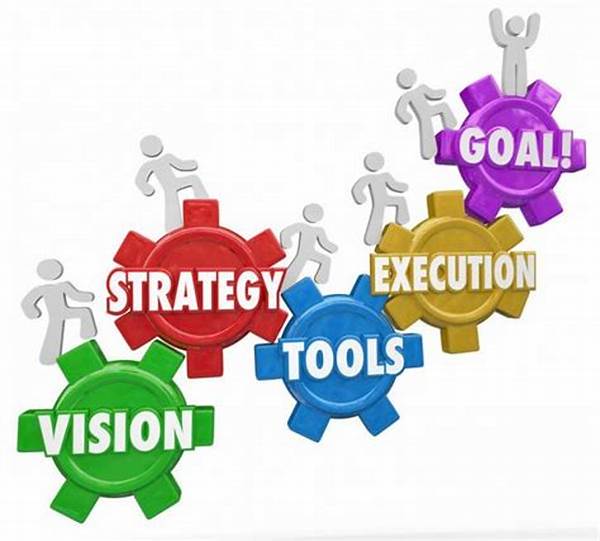
Five Human Resource Metrics that link People to Business Strategy – Business Operations Performance Metrics
This was a key finding in PwC’s 18th Annual Global CEO Survey, “People strategy for the digital age: A new take on talent”, which seeks to understand how businesses are preparing for the wholesale redesign of the world of work.
Clearly the standard HR metrics of Cost per resource, HR efficiency (no. of HR employees to total no. of employees), etc. which primarily help in driving down the costs are no longer sufficient in an environment where talent is the competitive edge for organizations. The need of the hour is HR metrics that are aligned to the current and the future business plans to ensure that not only is there no shortage of talent when we need it but also that we have processes and programs in place to create the right talent for our business.
When we create budgets for the year, we spend a significant amount of time planning where the revenue will come from and how the spend will be distributed across cost headers. In services organization, labour is the biggest component of both income and expenditure. Do we spend the same amount of time in planning how we would attract, retain and develop this big-ticket item so that the business objectives are met? Annual talent strategy planning is a must to develop and harness the potential of human capital – to proactively drive business outcomes instead of reactively responding to whatever the latest talent shortage crisis is. Based on my experiences in resource management and operations, here are the five human resource metrics that I think can help link your people strategy to your business strategy:
Human Resource Metrics #1: Competency Development Spend % – This one starts with identifying the key skills and talents that are necessary to execute on the company’s strategy for the year and create the competitive advantage while providing a platform for internal employees to learn and grow in their chosen career ladders. These could be technical (specialized software or hardware skills), functional (customer service, selling, tools and technology training) or managerial (leadership development, communication, succession planning, mentoring). Assess the current skill levels and the gap from where it needs to be and then draw up the competency development plan with budgets, timelines and desired outcomes for the year. Monitor the spend against the budget periodically (maybe monthly or quarterly) to ensure that there is focus on developing the right competencies that are needed for business success and that the plan is relevant to the current business scenarios.
Human Resource Metrics #2: Employee Engagement – This is the HR Mantra and enough research has been done to show that the EE figures of an organization are directly proportional to its business performance. Falling engagement levels are the precursor to higher attrition, lower productivity and increasing costs per hire. But an employee engagement survey just for the sake of measuring engagement is a waste of time and energy. The survey should be used as a tool to collect information that helps drive better results. Analysis should be done to isolate sincere actionable feedback from the “noise”. For example – what do your best performers think about your organization – does it allow them to perform to their optimum levels and get better every day? Invest and prioritize the engagement feedback that will really have an impact on key employee retention and overall employee performance and build this into your annual plan.
Human Resource Metrics #3: Quality of Hiring – This amounts to determining how a new hire’s abilities and performance varies from pre-hire requirements and expectations and is a metric that is generally calculated from 3-6 months after the hiring. Combined with the cost of hire (external recruitment spend+ internal labor costs) and the speed of hire (time taken to fulfill an open position), the quality of hire metric forms a great basis to measure the overall efficiency of your recruitment function and its processes (targeted sourcing, speedy reaction time, consistent screening process and continuous improvement). The impact of a wrong hire is huge on the business outcome and we definitely need to spend some time here to ensure we have the right data points and methodologies to ensure that we hire the right people for the right jobs. Some excellent data on this metric here : http://www.ere.net/2009/10/02/quality-of-hire-the-missing-link-in-calculating-roi-part-i-of-a-series/
Human Resource Metrics #4: Resource Utilization % – This is the most common metric used in human resource management and for a good reason. It is the ratio of the resource’s billable work to the total amount of work and hence has a visible and direct impact on a company’s revenue and margins. What I want to highlight here is the need to go beyond this number and look at the underlying reasons for variations in the numbers and focus on them for improvement. Numerous factors can change utilization rates, including inconsistency in calculations of what constitutes work and billable work, late and cancelled projects, increased training and ramp –up times and ancillary job demands, such as paperwork. Keep track of employee expertise areas and availability status in a central skill database, so that you can the quickly move people into a project and maximize utilization. Cross-train technical staff to respond quickly to changes in client demand. Developing a versatile and flexible workforce keeping in mind future customer requirements reduces idle time. Develop a bench strategy and a robust demand and supply forecasting process to stay on top of the target utilization numbers.
Human Resource Metrics #5: Revenue per Employee – This is a simple metric but the most important one to gauge and measure the success of all the plans and initiatives as outlined above – quarter on quarter and year on year. It also helps to compare the performance of your organization with similar organizations and set benchmarks internally for your HR and resource management functions, the data on total revenue and total headcount of companies being easily available. The revenue per employee should steadily increase leading to expanding margins and improved profitability. This is a number that must feature on all management reviews as it helps keep focus not only on the denominator (costs – and there is only so much cutting that you can do) but also on the numerator (revenue – where are we getting maximum value out of our labour and why – to drive strategy in the directions where it is working).
One size definitely does not fit all when it comes to metrics – and you may have your own views on what metrics are best suited to drive the talent advantage for your organization. One thing is common though – we need to collect consistent information on our resources, use metrics that enable decision-making and ensure that talent management strategy remains relevant with overall business strategy and contributes actively to business growth. We need to choose the metrics that help the management to make quick and sound business decisions that are based on facts rather than feeling. What has worked for you in this area – I would love to hear and learn from you.





